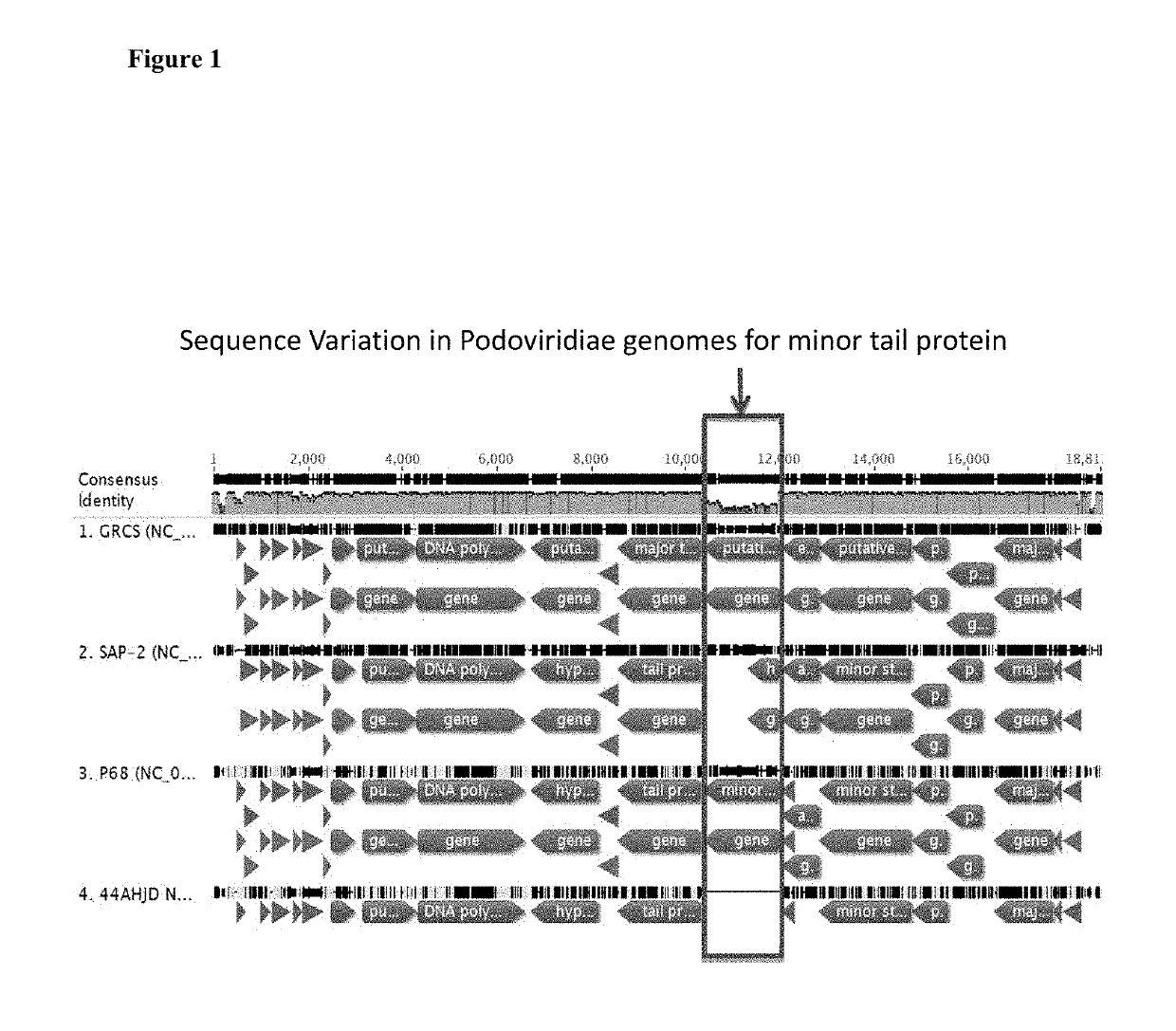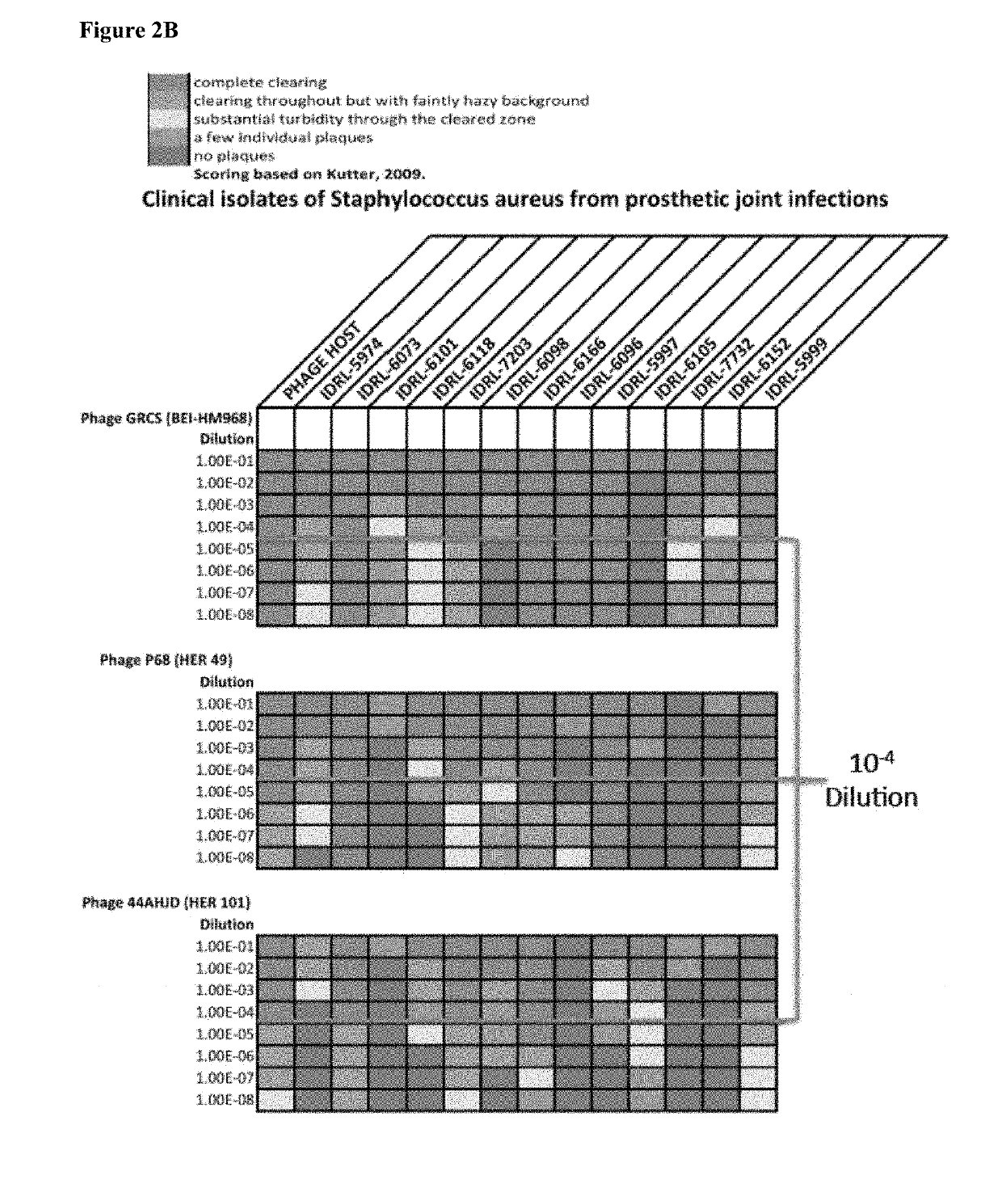Bacteriophage for treating staphylococcus infections
a staphylococcus and bacteria technology, applied in the field of staphylococcus infection treatment, can solve the problems of long-term functional handicap, high risk of amputation, and inability to tolerate dair, and achieve the effect of high infectivity and high infectivity
- Summary
- Abstract
- Description
- Claims
- Application Information
AI Technical Summary
Benefits of technology
Problems solved by technology
Method used
Image
Examples
example 1
of Podoviridiae Bacteriophage Genome Sequences
[0058]The genome sequences of four Podoviridae bacteriophages GRCS, SAP-2, 44AHJD and P68 were compared using Geneious version 6.1.4. Comparison of the genome sequences across these phages illustrated a high level of homology, indicating a high degree of relatedness to each other. However, genome analysis also revealed significant sequence divergence in a single ORF, i.e., the GRCS gene 18505614 (˜10,000 to 11,500). The GRCS gene 18505614 encodes for a putative minor tail protein, compared to SAP-2 (truncated), P68 (lack of homology) and to 44AHJD (missing open reading frame) (see FIG. 1).
Example 2: Analysis of Bacteriophage Infection Efficiency of Staphylococcus aureus Isolated from Prosthetic Joint Infection (PJI)
[0059]The plaque-forming efficiency of 3 highly related virulent Podoviridae phages was determined using dilution agar overlay assays with S. aureus from 14 non-implant strains (multiple sources) and 27 isolates from PJIs. Lyt...
example 3
f the GRCS Genome into Bacterial Artificial Chromosome
[0071]Terminal protein-primed DNA phages have a small protein covalently attached to the 5′ ends of their dsDNA genomes. The terminal protein-primed DNA replication has been found in several phages related to GRCS including P68, a highly homologous S. aureus phage. The literature describes that terminal proteins are required for DNA replication and packaging of these phage genomes. This would putatively prevent insertion of an intact phage genome into a vector for propagation of the phage, as without the terminal protein, replication and packaging would not occur.
[0072]Comparisons to known terminal proteins in other phages did not reveal any homologue in the GRCS genome. The DNA polymerase of GRCS does have the signature amino acids found in other protein-primed DNA polymerases from these other phages, suggesting that GRCS utilizes a protein-primed DNA replication mechanism.
[0073]Based on the following observations, it was discov...
PUM
| Property | Measurement | Unit |
|---|---|---|
| Fraction | aaaaa | aaaaa |
| Volume | aaaaa | aaaaa |
| Fraction | aaaaa | aaaaa |
Abstract
Description
Claims
Application Information
 Login to View More
Login to View More - R&D Engineer
- R&D Manager
- IP Professional
- Industry Leading Data Capabilities
- Powerful AI technology
- Patent DNA Extraction
Browse by: Latest US Patents, China's latest patents, Technical Efficacy Thesaurus, Application Domain, Technology Topic, Popular Technical Reports.
© 2024 PatSnap. All rights reserved.Legal|Privacy policy|Modern Slavery Act Transparency Statement|Sitemap|About US| Contact US: help@patsnap.com










